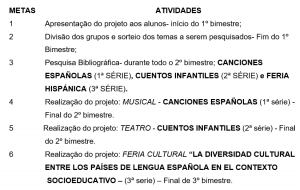ORIGINAL ARTICLE
MALDONADO, Gabriel Orlando Quiñones [1]
MALDONADO, Gabriel Orlando Quiñones. Cohesion and coherence in the argumentative text in defense of the Portuguese language published by José Pacheco Pereira. Revista Científica Multidisciplinar Núcleo do Conhecimento. Year 05, Ed. 08, Vol. 02, pp. 36-43. August 2020. ISSN: 2448-0959, Access Link: https://www.nucleodoconhecimento.com.br/lyrics/cohesion-and-coherence, DOI: 10.32749/nucleodoconhecimento.com.br/lyrics/cohesion-and-coherence
SUMMARY
This article is based on the area of Interactional Sociolinguistics and presents an analysis of excerpts from the argumentative text published by José Pacheco Pereira “O vírus que atacou a língua portuguesa”. Fragments of the text were analyzed to interpret cohesion and coherence and the justification of its arguments in the reading of this article is presented. In this initiative, the results revealed the pragmatic interpretation that the text had with the COVID-19 pandemic.
Keywords: Interactional Sociolinguistics, argumentative text, cohesion, Portuguese language, orthographic agreement.
1. INTRODUCTION
For this analysis, we chose the argumentative text published by José Pacheco Pereira entitled “O vírus que atacou a língua portuguesa”, because it is welcomed in the theme of the Interactional Sociolinguistics seminar. For several years, Mr Pereira has been constantly fighting the 1990 Orthographic Agreement, hereinafter AO90. He’s always been at odds with the AO90. In his article, he refers to the Agreement as “acordês”, which can generate a situation of confusion. This confusion led me to look for the definition of the word “chord”, but I found nothing relevant.
The closest word was chords, without circumflex, referring to musical chords. In my opinion, the language is melody, but in this case it is dissonance, no melody, no chords. The word, too, attracts the reader’s attention. At first glance, the word fulfilled its first goal, captivating the reader. Secondly, the word presents an air of confusion and thus leads you to reflect on the author’s thinking: the spelling disagreement. This argumentative text was so interesting that I decided to examine it and seek its justification and coherence.
2. Consistency
Coherence is the textual/discursive attribute by which the statements that compose it refer to the same fact. For a text/discourse to be coherent, its asserts must focus on a subject and must respond to our knowledge of everyday life and our reality. Sometimes, the receiver might not have experience or knowledge about the arguments or topics under discussion, which would lead to the loss of interest in finalizing the conversation or reading. Texts/discourses provide new information in each utterance/sentence, but utterances/phrases are no longer consistent if they do not refer to a common subject. According to Lopes (2009, p. 242): “it is generally accepted that establishing coherence is a central aspect of discourse understanding; therefore, processing the meaning of the discourse involves recovering the relations of coherence that integrate the individual propositions expressed throughout the text.”
3. Cohesion
In addition to being consistent, the asserts of a text must be connected or cohesive with each other. Thus, two coherent claims may not constitute a text if their grammatical relationship is incorrect. Cohesion is therefore the attribute from which the asserts of a text are correctly linked from a lexical and grammatical point of view. Cohesion is preserved in texts based on various procedures that can be lexical if they take into account the words and their meanings, the grammatical aspects and the various resources that are used. In this context, Fonseca (1994, p. 8) asserts that: “the texture in the traces that make a unified semantic product of a verbal product, as such functioning globally in a communication situation, in which it is adequately inscribed”.
4. Justification
Justification can be a type of alignment applied to the lines of a text to make each end match the initial thought of the statement. It seeks to justify individual or collective reasoning, or even the experiences expressed in the statement or in the text in general. For Lopes (2009, p. 242), justification must be understood from a relationship of pragmatic coherence, and thus, in order for this relationship to be characterized, the author emphasizes the relational differences between cause and justification. It is part of short texts and argues that: “there is empirical evidence, in terms of syntactic and prosodic behavior, that an account of the justification relationship requires a sequence of two acts of speech, and I will point out that this relationship occurs in different types of argumentative texts”.
4.1 THE CAUSE AND EFFECT
An individual’s action is somehow related to something that leads them to act. The effect is the result, end, consequence, conclusion about what is derived from a cause. This is because every phenomenon has something that generates it, since nothing happens out of nothing, but what comes out under the perception of the cause is what is known as effect. Therefore, every event has a cause, because everything that happens is linked to an interaction process, the first events being the cause and the second, in turn, represent the effects. According to Lopes (2009, pp. 250-251),
… I collected a set of examples showing that the same relationship of coherence of Justification can be marked by different connectives in the contemporary European Portuguese: because, therefore, since, since, since… Excerpt 1: “I no longer put books on the table, novels, poems, essays, because the better known and creative the author is, the less he uses the “chord”.
In the analysis of excerpt 1, it is evident that the more known and creative the author, the less he will use the “acordês”, since the works to be created will consider the bond built with the reader, who dispenses with the “acordês”.
4.2 The ADRs
According to Lopes (2013, p. 11), “adverbs now, so, soon, always, still, already, finally function syntactically as modifiers of predicate, express time or aspectual values and contribute to the propositional content of the utterances that welcome them”. The author proposes two excerpts to exemplify this situation:
Excerpt 2. “I don’t give up, because there’s still a lot to do against the Agreement.”
Excerpt 3. “Then we help by all means those who are explicitly against the Agreement, in order to create a caust …”.
In the analysis of excerpt 2, the fact that “there is much to do against the Agreement” is the cause of the fact that it has not yet given up. The adverb also modifies the predicate, expressing the temporal value of an inconclusive action, in this case “there is much to do against the Agreement”.
In the analysis of excerpt 3, continuing the evolution of the argumentative text, the author uses the adverb “after” to indicate continuity, accompanied in the same utterance of the other adverb “so”. By disclosing that after receiving the support of those who are against the Agreement, he will have an attitude in order to create a causs. In the investigation of information about the author of the text, I discovered that he has been fighting the Agreement for many years. So this adverb gives weight to your words. The temporal value of “still” brings the weight of constant struggle from years ago directly to the moment the text was written.
4.3 THE PAST PARTICIPLE
All past participers of ar-verbs end in -ado, while past participers of verbs -er and -go usually end in -gone. Examples: talk-spoken, eating-eaten, listening-heard. Some verbs -er and -ir have irregular past participers. Here are some of the most common: (open: open/ cover: covered/ say: said/ write: written/ do: done/ put: rank/ see: seen/ come: coming). Some verbs have two forms of participle, one regular and one irregular. The irregular shape is used with auxiliary verbs to be and be. The regular form is used with the auxiliary verbs to have and to have.
When a past participle is used as an adjective, it agrees with the number and gender it modifies. In this context, the verb is also used to be + past participle to express a state or condition resulting from a previous action. According to Lopes (1996, p. 366) the past participle allows the description of the state that is subsequent to the culmination, “but presupposes this same culmination, this border point. The event described by the main prayer is subsequent to the culminating event that the partial prayer presupposes: hence the sequential interpretation”. Example: “Language is a living thing, and “acordês” is a dead language.”
In the analysis of excerpt 4, we have a subsequent state that is “language is a living thing” to the culmination of the excerpt that is “and “acordês” is a dead language”. The sense i have brought is that the Agreement kills language and language is a living thing.
4.4 CONNECTORS
According to Lopes (2005, p. 17), “connectors are another central instrument of textual/discursive cohesion. We include under the designation of connectors either the traditional conjunctions (and, or, but, because, when, etc.)”. It continues its analysis by stating that the situation is present: “[…] either adverbic and prepositional expressions with connective function (finally, in a way, in fact, in fact, in this way, consequently, hence, on the contrary, on the contrary, however, etc.)” (idem).
Excerpt 5. “Behind these publications is a series of diplomatic agreements that are either being illegally applied, or have been ratified and put in the drawer, with explicit statements that they are to put in the drawer, or, finally, have not been approved by the countries that should have incorporated them into national legislation” (LOPES, 2005, p. 17).
In the analysis of excerpt 5, it is seen that the connector ‘or’ is used three times by the author. In this case, it facilitates the construction of the meaning of various events behind the publications of diplomatic agreements.
5. INTERACTIONAL SOCIOLINGUISTICS AND INTERCULTURAL PRAGMATICS
In this text and in interviews recorded on the Internet, Pereira seeks to get the attention of the Portuguese community. In his journey, he has fought faithfully against the Orthographic Agreement of 1990 from acts in defense of society and the Portuguese language, as pointed out in excerpt 6: “And, as a living being, the language and its spelling evolve every day, translating the dynamism of the peoples and society where it is spoken and written”. Explains Tannen (2005, p. 208) that:
SI analysis aims, first, to explain how language works to create meaning in interaction and, secondly, as one of the many elements that contribute to results when members of different cultures meet in contexts where language is a great means of negotiation.
Fonseca (1992, p. 48) explains that “the understanding of the text develops on the basis of this interaction between the verbalized and the universe of knowledge of the receiver. It depends on the ability of the receiver to connect the facts, the events.” In the text I am analyzing here, the word “acordês” had a significant impact. When reading the word, doubts are created, questions arise, all referring to the value of the word and what the author wanted to express. In general, argumentative texts/discourses aim to conquer their reader/receiver. With this, the arguments are presented in support of a thought or point of view. The speaker/sender of the text/discourse depends on rational development (with contributions of evidence, the established elements of connection, coherence, reflections, opinions, experiences, among others) and uses various discursive genres, such as narration, description and exposure.
In the context of discursive argumentation, it is considered that it has as its initial position an approach that is not shared internationally, therefore, reasons for and against the proposed argumentation will be constantly obtained. The argumentation has as approach to spread a conviction from the opinion of the announcer/sender in order to be able to impact the interlocutor-reader /receiver and that the message be admitted or refuted, according to the way of thinking of each one. Rodrigues (2007, p. 9), in his article “Cognitive processes and communication strategies”, explains that:
Discursive interaction is an activity that human beings perform in each other’s physical presence, from this presence to those who take part in it the status of participants. It is because physical presence is the first and fundamental factor of discursive practice that all other modalities of discursive practice have in conversational activity their model and its foundation. In any of the other discursive modalities, such as epistolary correspondence, telephone or telematics, writing and reading literary works or any other modality of written discourse, we can only understand the meaning of what we write or read because we assume the physical presence of interlocutors.
Thus: “Each of these other modalities of discursive practice depends on technical devices that cannot ensure the totality of the dimensions of the physical presence involved in face-to-face conversational activity” (RODRIGUES, 2007, p. 9).
CONCLUSION
Pereira’s argumentative text, in my opinion, complies with the structural processes of cohesion and coherence. Their arguments were presented and justified in the reading path. On the other hand, the author has several video-recorded presentations that can be searched on the internet. With this, the author has a trajectory of interaction with a community that supports or does not support the elimination of the Orthographic Agreement of 1990. At the beginning of the text, he presented in a prayer an argument that shows support for his claim. In excerpt 7, we see that the author wrote the word “current”, used before the AO90, for now he continues to employ the spelling used before the AO90. Here one does not make an analysis of words written in the text, but uses the writing applied before the AO90 to self-sustain its argumentation.
It is also another way to immerse yourself in the community that supports the AO90 derogation. To conclude, I analyze José Pacheco Pereira’s argument. The text presents the theme from the argument that there is “a virus that attacks the Portuguese language”. The author takes advantage of the overall situation of the virus to give more impact to the argument that he exposes in his message. The author wants to show that the Portuguese language was hurt by a virus worse than Coronavirus, due to the social and cultural effects that the implementation of the Orthographic Agreement of 1990 brought. The author expresses that the Agreement is unpopular. The feeling that it is not popular is because the other Portuguese-speaking countries, the vast majority of famous authors or creatives, do not use the agreement. The author’s conclusion is the following prayer “The Portuguese language needs us. And do not forget this fact: the Agreement is unpopular.” In this conclusion, the author refers to the sense that the agreement is unpopular, since no one follows the rules and continue to use the “living language”, the popular language, the language that was, is and will be sustained by society and not by academies, nor governments.
REFERÊNCIAS
FONSECA, J. Coerência e coesão nas unidades linguísticas. In: FONSECA, J. (Org.) Linguística e texto/Discurso: teoria, descrição, aplicação. Lisboa: Ministério da Educação/ Instituto de Cultura e Língua Portuguesa, 1992.
FONSECA, J. O lugar da Pragmática na Teoria e na Análise Linguísticas. In: FONSECA, J. (Org.). Pragmática linguística. Porto: Porto Editora, 1994.
LOPES, A. C. M. Texto e coerência. Revista Portuguesa de Humanidades, v. 9, n.1/2, p.13-33, 2005.
LOPES, A. C. M. Interfaces. In: SILVA, F. et al. (Eds.). Textos Selecionados. Coimbra: APL, 2013, p. 3-20.
LOPES, A. C. M. Tempo, aspecto e coesão discursiva. Actas do XI Encontro Nacional da Associação Portuguesa de Linguística, v. 3, p. 351-371, 1995.
LOPES, A. C. M. Justification: a coherence relation. Pragmatics, v. 19, n. 2, p. 241-252, 2009.
PEREIRA, J. P. O vírus que atacou a língua portuguesa. 2020. Disponível em: https://www.publico.pt/2020/05/09/opiniao/opiniao/virus-atacou-lingua-portuguesa-1915735 Acesso em: 9 jul. 2020.
RODRIGUES, Adriano Duarte. Processos cognitivos e estratégias de comunicação. Revista do Centro de Estudos Judiciários, v. 7, p. 1-27, 2007.
TANNEN, Deborah. Interactional sociolinguistics as a resource for intercultural pragmatics. Intercultural Pragmatics, v. 2, n. 2, p. 205-208, 2005.
[1] Post-doctor in Education with research in Brazilian Musical Sociolinguistics from the Virtual University of Higher Studies – UNIVES in Mexico (2020); PhD in Portuguese Language Teaching from Bircham International University in Madrid Spain (2018); Master in Languages, Cultures and Societies in Multilingual Environments – French Foreign Language by the “Université des Antilles” in Martinique (M1-2016 / M2-2018); Postgraduate (Specialization) in Portuguese Language Studies: Research and Teaching by the Open University of Portugal (2014): Graduated in Modern Languages, qualification in Portuguese and French, from the Universidad de Puerto Rico – Río Pedras Enclosure (2009).
Sent: July, 2020.
Approved: August, 2020.





